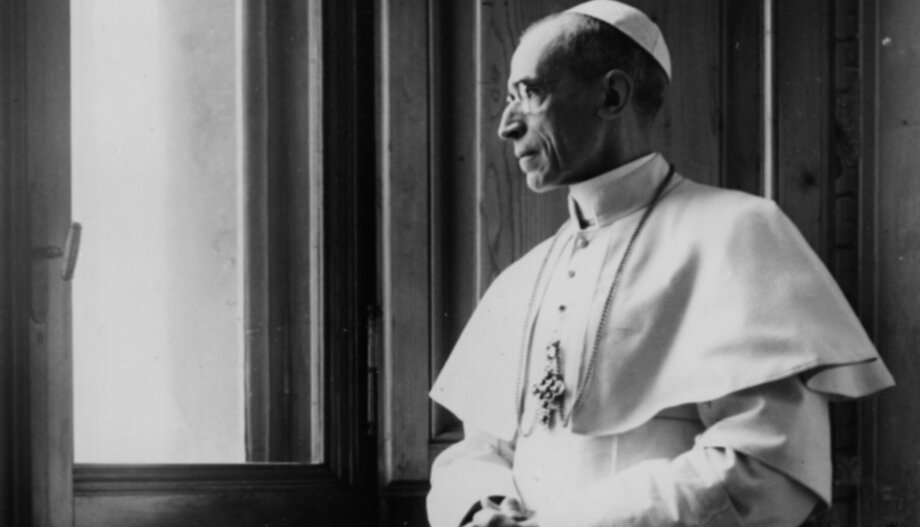Last week was held at the Pontifical Gregorian University a conference on "New documents of the pontificate of Pius XII and their significance for Jewish-Christian relations. A dialogue between historians and theologians". Three intense days, divided into five sessions with more than twenty papers in which an attempt was made to outline a broader picture: the role of Vatican diplomacy, that of the other authorities, the work of the nuncios and that of the individual communities. The aim was to understand the action of Pius XII within the historical contingency of the time and the practice of the Holy See.
Among the speakers was Roberto Regoli, who heads the Department of Church History and the journal Archivum Historiae Pontificiae at the Gregorian. Omnes asked him some questions.
When Eugenio Pacelli was elected Pope, papal diplomacy had a significant global reach, steadily growing since the turn of the century. How can we view this diplomacy, especially in relation to the Jews?
When a new pontiff was elected, the Secretariat of State prepared a report on the States to be presented to the new Pope. This also happened in 1939, when the head of Vatican diplomacy, Eugenio Pacelli, was elected to the papal throne. The document turns out to be a valuable tool to know the "state of affairs" of one of the oldest diplomacies in the world in a context of international crisis, due to the tension that would soon lead to a new world conflict. In this long report, the Jews are only mentioned in one passage, dated February 28, 1939, with the title "Measures adopted by the Holy See in favor of the Jews". This document is important because it reveals the Vatican's mentality on the question, an unfiltered mentality, since it is an internal document not intended for publication or in any case for dissemination. In any case, the horizon of the text is in the very title of the paragraph, "In favor of the Jews," which reveals an openness of attitude. "The Holy See," it reads, "has not remained indifferent to the struggle that has recently been unleashed against the Jews in various nations. But especially to the converted Israelites it has directed its work of assistance and aid." It is evident that the horizon of action of the Holy See is directed mainly to Catholics, although not exclusively. It was only in those years, and especially after the Second World War, that the Catholic Church and, in particular, the Papacy became aware of its international moral role, which made it an expert in humanity, as the Church would say of itself in the 1960s (the Conciliar Church).
How does the Church live this awareness of its role and how does diplomatic attention to Jews manifest itself concretely?
Awareness is gradual. The more the human drama of war and persecution increases, the more the Church becomes aware of humanitarian needs. In the ways she considers most appropriate at any given moment, silence prevails over words: more action, less proclamation. Faced with Polish requests for protests from the Holy See, Secretary of State Maglione considered in March 1941 that "protests do the poor more harm than good". The Polish case preceded the Jewish case and anticipated it in the approach of the Vatican diplomatic mentality. In 1939, in the wake of the anti-Semitic campaign in Italy, the Holy See especially helped the "Committee created among Irish Catholics" to "help Jewish converts" in Italy but of Irish origin. And it works "in favor of professionals of Jewish origin". It also intervenes in favor of scientists "of Jewish descent". The Secretary of State's document then focuses on the Italian case, with interventions in favor of Jewish converts, at least until the beginning of 1939. In reality, beyond the claims of the document, the action of the Saint was broader, including non-converts. During the Second World War, two were the fields of greatest interest for the nunciatures and pontifical delegations: humanitarian interventions for the escape of Jews and the gathering of information to try to understand what was really happening inside the territories under the hooked cross and its satellites.
How do the new sources, available since 2020, help to clarify the breadth and depth of diplomatic relations established by the Holy See under the pontificate of Pius XII?
In the new Vatican documentation a vast worldwide network of support for Jewish converts under the direction of the Vatican can be perceived. Even in distant territories, such as the Apostolic Vicariate of Shanghai. The Holy See followed in those months the Jewish emigration to the United States, Haiti, Central and South America and Turkey. There was no shortage of requests for help from Spain to facilitate transit visas. Alongside this diplomacy of charity, the network of papal representations in the world also works in the collection of information on the ground, which is the first step in the dynamics of decision-making. Let us think of the most significant nunciature of those years, the Swiss nunciature, very active between 1938 and 1939 in aid and assistance to refugees for racial and religious reasons. Nuncio Filippo Bernardini became in 1943 the crossroads of information between Silberschein, a Jew from Lviv, president of the "Comité pour l'assistance à la population juive frappée par la guerre", and the Holy See. Silberschein delivers to the Nuncio a report written by the special delegates of the Committee on the situation "de ce qui reste des Juifs en Pologne", as well as of the Jews in Romania and Transnistria.
The report is accompanied by photos with the following captions: 'Un homme est enterré vivant', 'Photo prise en plein hiver. Des hommes [completely naked] sont forcés d'entrer dans un fleuve, d'où il ne doivent plus sortir' and 'Des cadavres sont ramassés après une exécution en masse.' The photos are kept in the archives of the nunciature, so it was not considered important to send them to Rome. Instead, the rest of the information is sent to the Vatican.









